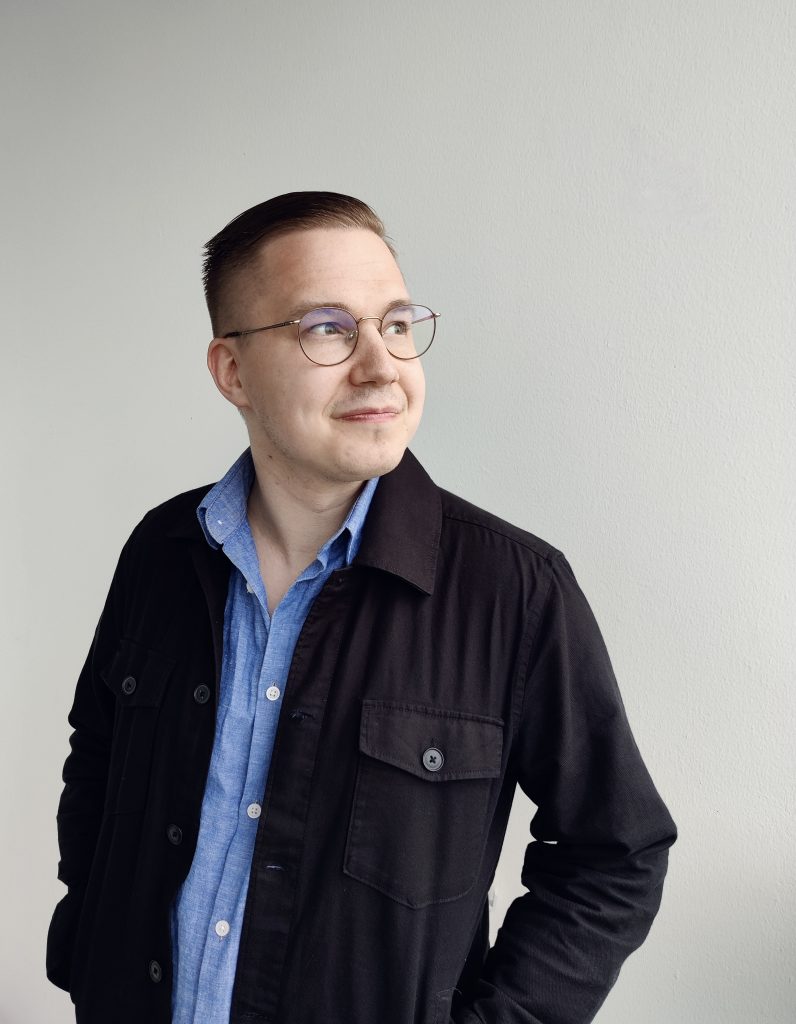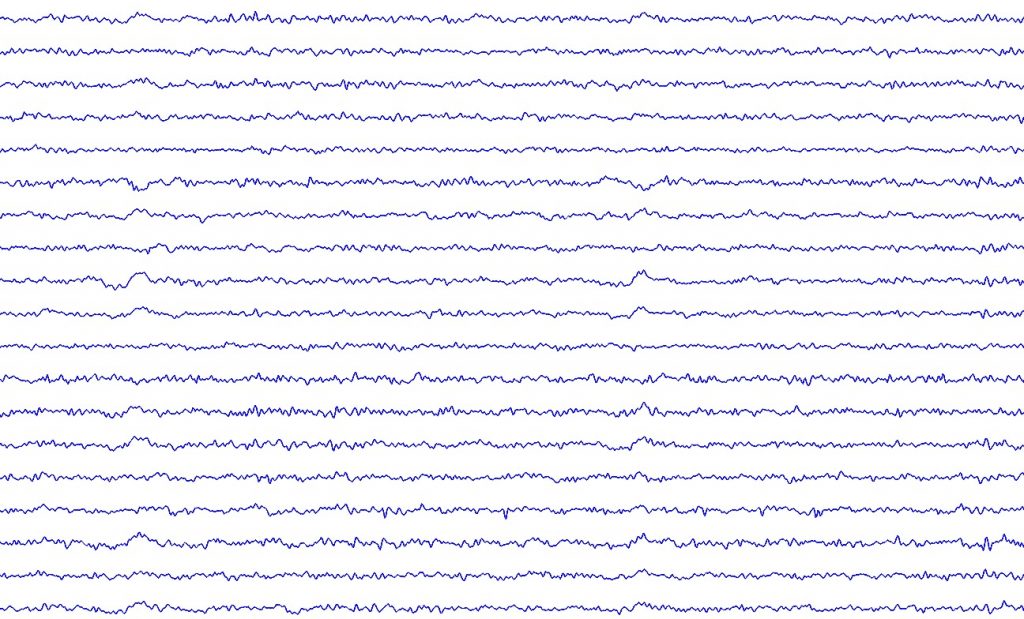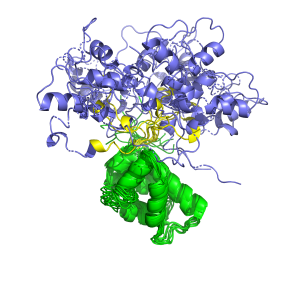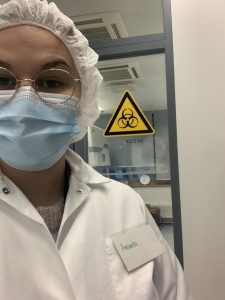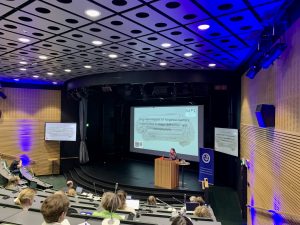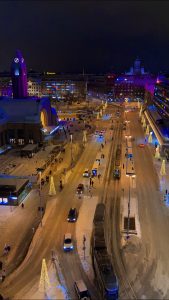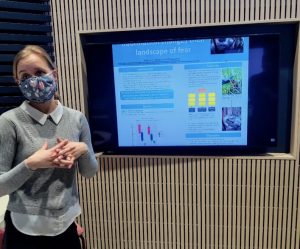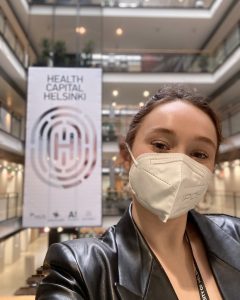Hi everyone! My name is Anushka Wakade. In this blog, I am going to share
my journey from being just a budding neuroscience enthusiast to an
international HiLIFE trainee in the Neuroscience Center of Helsinki.

A Peek into my Life before Finland
As far back as I can remember, the workings of the human brain have
always fascinated me. The intricacies of human behavior and the fallout
that is seen when the brain glitches has never failed to intrigue me. As a
result, even as a bachelor’s student in life-sciences, I have tried my best to
go out of my way and read and obtain as much experience as I could on
this topic. During my extra honor courses and internships, I realized that
neurodegeneration, cognition and the link between the two appealed to me in this massively broad field of neurosciences. Keeping in mind that the next
logical step was to pursue my further education (as a master’s degree) in
the same, I started looking for master’s courses that were offering similar
experience in Europe (as neuroscience related research is expanding here
exponentially) . The master’s program in the University of Helsinki fit all my
expectations with respect to courses, practical experiences and exposure
to opportunities. Hence, it was not a difficult decision to finalize Helsinki
and move here for my further education.
Perks of being a HiLIFE Trainee
During my time as a HiLIFE trainee. I decided to join as a trainee in Dr.
Coralie Di Scala’s group in the Neuroscience Center. The lab is focused on
studying the lipid-protein interactions in nervous system diseases, with a
special emphasis on epilepsy. Having studied biochemistry extensively
during my bachelor’s, my interests and suitability to work in a group which
studies neurodegeneration from a biochemical point of view worked out
well for me to decide that I wanted to pursue my master’s thesis in the
same lab.
Temporal Lobe Epilepsy is one of the most common types of epilepsy
whose clinical definition is the presence of unprovoked recurrent seizures
over a period longer than 24 hours. Approximately 30 to 50% of epileptic
patients suffer from severe cognitive deficits (such as memory alterations)
whose severity only increases the longer they have seizures. Being one of
the most globally prevalent disorders, research concerning its
pathophysiology has been under work for a couple of decades now.
Unfortunately, no cure or aetiology has been identified so far. The current
anti-epileptic drugs used to counteract the intense symptoms have been
found to be ineffective in about one third of the epileptic patients. As a
result, the condition of epileptic patients continues to worsen, decreasing
their quality of life. For this reason, it is crucial to direct research towards
discovering the underlying mechanism of epilepsy, which would lead to
finding more effective therapies. Currently, there are quite a few theories
investigating this underlying molecular mechanism and one of the most
widely accepted for Temporal Lobe epilepsy is that the alteration of
chloride ion homeostasis in neurons causes a grave impact on the
synaptic (neuronal) communications in the brain, precipitating the
apparition of seizures. The disturbances in neuronal chloride homeostasis
in epilepsy are caused by the malfunctioning of the chloride ion
co-transporters present on the cell membrane, which are responsible for regulating the ionic flux between cells. Our laboratory is interested in exploring the missing or the unknown aspects of this specific theory. Dr. Di Scala’s lab has discovered that certain lipids present in the cellular membrane (Gangliosides) have specific and direct
interactions with these chloride cotransporters and hence also plays a
crucial role in maintaining it’s structural and functional integrity,
necessary for the normal neuronal functioning. Despite knowing the other
vital functions of gangliosides, no other research group has explored it’s role in
the pathophysiology of epilepsy and its potential therapies. In this way, the
laboratory is novel in its approach and explores avenues that have not yet
been taken into account for explaining the mechanism and progression of
this disease through modulation of these chloride transporters. This would open several avenues
for new therapies concerning epilepsy. The lab is currently focused on quantifying and then studying the interactions between these gangliosides (membrane lipid) and protein (chloride transporter) to get a fuller picture of the pathophysiology of epilepsy.
My thesis would be a sub-project of this larger research question
that the laboratory is tackling by focusing on the characterization of lipid
alteration during epilepsy.
I have been working on this for a couple of months but I still have a long
way to go before I wrap up my thesis. I am extremely excited and hopeful
for the results that will start rolling in soon. During this period, I have not
just grown as a researcher but also as a person. The support and
teachings by both my supervisors have been invaluable and I am sure they
will stay with me wherever I go next in my career! I will elaborate more on
this and my future plans in my next post once I finish my thesis. Thank you for being interested! I will keep you updated!

